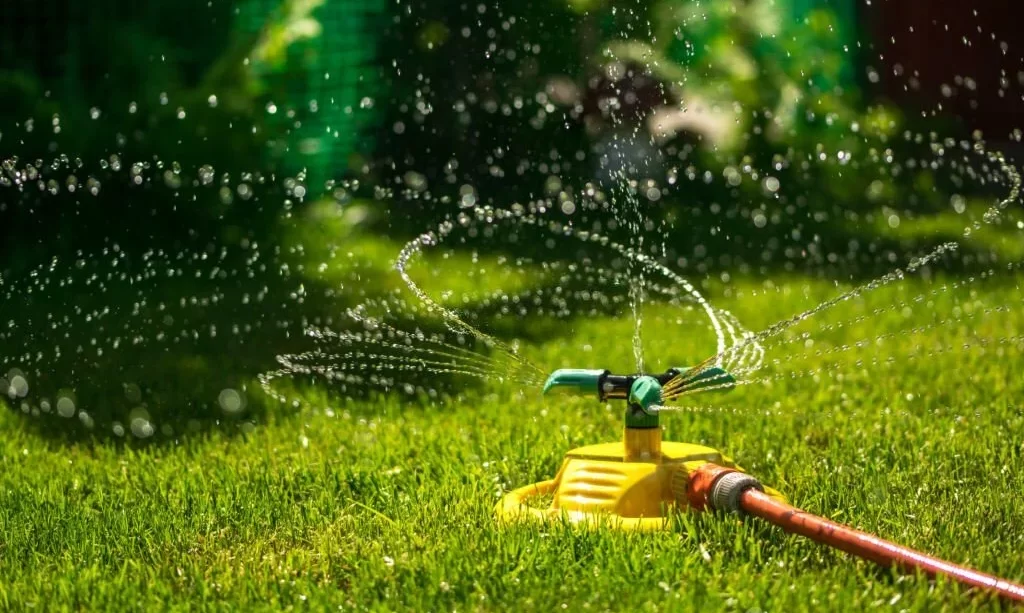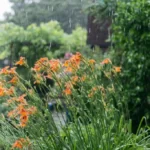A lush, green lawn is the crown jewel of any home’s outdoor space, but achieving that vibrant greenery requires more than just mowing and basic maintenance. One of the most critical elements in maintaining a healthy lawn is proper watering. Knowing when and how to water your lawn can make a world of difference in its appearance and resilience. In this comprehensive guide, we’ll explore the science and art of lawn watering, helping you understand the intricacies of your lawn’s water needs and recognize the telltale signs that it’s time to provide a drink. By the end, you’ll be well-equipped to keep your lawn thriving year-round.
Your Lawn’s Water Needs
Every lawn is unique, and the water needs of your grass depend on several factors. These include your grass type, soil composition, climate, and the season. Understanding these components is essential to tailor your watering schedule effectively:
- Grass Type: Different grass varieties have varying water requirements. For example, cool-season grasses like Kentucky bluegrass need more water than warm-season grasses like Bermuda grass.
- Soil Type: Soil composition influences water retention and drainage. Sandy soil drains quickly and requires more frequent watering, while clay soil retains water for longer.
- Climate: Local climate conditions play a crucial role. Areas with hot and arid climates may demand more water for the lawn to thrive.
- Seasonal Variations: The amount of water your lawn needs can change from season to season. Understanding these fluctuations is vital for adjusting your watering schedule accordingly.
Signs Your Lawn Needs Water
Your lawn will often communicate its water needs through visual cues. Recognizing these signs is essential to ensure your lawn stays healthy and hydrated:
- Grass Wilting: When your grass starts to look droopy or limp, it’s a clear indication that it needs water. You may notice a bluish-gray hue on the grass blades, especially in the hottest part of the day.
- Change in Color: A healthy lawn is typically vibrant green. If you notice your grass turning a dull, grayish-green or brownish color, it’s time to water.
- Footprints Don’t Bounce Back: When you walk on your lawn and footprints or impressions linger instead of bouncing back, it’s a sign that the grass lacks sufficient moisture.
Paying attention to these signs is crucial for preventing under or overwatering, which can both have detrimental effects on your lawn. In the upcoming sections, we’ll dive deeper into the best times to water, the frequency of watering, and various watering techniques to help you maintain a vibrant and thriving lawn.
Best Times to Water
Timing is critical when it comes to watering your lawn. Choosing the right time of day ensures that the water is effectively absorbed and minimizes water loss due to evaporation. The two best times to water your lawn are:
- Early Morning: Watering your lawn in the early morning, typically between 4 a.m. and 10 a.m., is the ideal choice. The morning hours provide a cool and calm environment for your lawn to absorb water before the heat of the day. This reduces the risk of fungal diseases and allows the grass to dry quickly, preventing the growth of mold or mildew.
- Late Afternoon: If you can’t water in the morning, the late afternoon, from 4 p.m. to 6 p.m., is the second-best option. The temperature is lower than at midday, so the grass has some time to absorb the water before nightfall. However, avoid watering too close to sunset to prevent extended moisture on the grass overnight, which can lead to fungal issues.
It’s important to note that watering during the hottest part of the day, typically from 10 a.m. to 4 p.m., is not recommended. The high temperatures cause rapid evaporation, resulting in water loss without benefiting your lawn.
Frequency of Watering
Determining how often to water your lawn depends on various factors, and it’s not a one-size-fits-all solution. Consider the following guidelines:
- Grass Type: Different grass types have varying water needs. Cool-season grasses, like fescue and Kentucky bluegrass, typically need more water than warm-season grasses such as Bermuda and zoysia.
- Climate: Your local climate plays a significant role. Hot and arid regions may require more frequent watering, while cooler, more humid areas may need less.
- Soil Type: Soil composition influences water retention. Sandy soils drain quickly and need more frequent watering, whereas clay soils hold water longer.
- Season: Lawn water needs change throughout the year. During the summer, when temperatures are high, you may need to water more frequently. In contrast, during cooler seasons, less frequent watering is required.
- Signs of Thirst: Pay attention to visual cues from your lawn. When you notice wilting grass or a change in color, it’s an indicator that it’s time to water.
While there is no one-size-fits-all frequency for lawn watering, a general rule of thumb is to aim for about 1 to 1.5 inches of water per week, including rainfall. To determine how long you should water, consider using a rain gauge or placing containers around the lawn to measure the amount of water delivered during your watering sessions. This allows you to adjust your watering schedule based on your lawn’s unique needs and the specific conditions of your region.
Watering Techniques
Proper watering techniques ensure that your lawn receives the right amount of moisture without waste. Here are some effective watering methods:
- Sprinklers: Oscillating, rotary, or stationary sprinklers can evenly distribute water across your lawn. Position them to avoid runoff and overlap their coverage areas to ensure uniform watering.
- Soaker Hoses: Soaker hoses release water directly at ground level, minimizing evaporation. They’re ideal for slow, deep watering.
- Drip Irrigation: Drip systems are efficient and precise, delivering water directly to the root zone of each plant. This conserves water and reduces the risk of fungal diseases.
- Manual Hose-End Sprayer: This method provides control over the water application. Water your lawn evenly, starting and stopping in different sections to prevent overwatering.
Deep vs. Shallow Watering
Understanding the importance of deep watering is crucial for lawn health. Deep watering encourages the development of strong and resilient root systems, resulting in a more drought-tolerant lawn. Shallow watering, on the other hand, can lead to weaker roots and increased vulnerability to dry conditions.
- Deep Watering: This method involves providing a substantial amount of water, typically 1 to 1.5 inches, allowing it to penetrate deep into the soil. This encourages grass roots to grow deeper in search of moisture, making the lawn more resilient during periods of drought.
- Shallow Watering: Shallow watering involves providing small amounts of water frequently. While it may seem convenient, it promotes shallow root growth, making the lawn more susceptible to water stress. Avoid this method to ensure a healthier and more resilient lawn.
Water Conservation Tips
Conserving water while maintaining a healthy lawn is not only environmentally responsible but also cost-effective. Here are some water conservation tips for your lawn:
- Rain Barrels: Install rain barrels to collect rainwater for later use in your lawn or garden. This reduces the need for tap water.
- Adjust Sprinkler Settings: Regularly check and adjust your sprinkler heads to ensure they’re not wasting water on driveways, sidewalks, or other non-grassy areas.
- Avoid Overwatering: Stick to a proper watering schedule and avoid overwatering, as excess water can lead to waste and lawn problems like fungal diseases.
- Lawn Maintenance: Proper lawn care practices, such as mowing at the correct height and removing thatch, can help your lawn use water more efficiently.
- Fix Leaks: Regularly inspect and repair any leaks in your irrigation system to prevent water loss.
- Use Mulch: Apply a layer of mulch around trees and shrubs to reduce evaporation and retain soil moisture.
By implementing these watering techniques and conservation tips, you can maintain a healthy and lush lawn while minimizing water waste, helping both your lawn and the environment thrive.
Adjusting Watering for Seasonal Changes
Adapting your watering schedule to seasonal variations is essential for keeping your lawn in prime condition. Here’s how to make the necessary adjustments:
- Summer: During the scorching summer months, your lawn may need more frequent watering, usually about 2 inches of water per week. Water in the early morning or late afternoon to reduce water loss through evaporation. Keep a close eye on the signs your lawn provides, as heat and sunlight can quickly stress your grass.
- Fall: As temperatures cool in the fall, your lawn’s water requirements typically decrease. Reduce the frequency of watering to 1 to 1.5 inches per week, and be prepared for less evaporation. Fall is an ideal time for deep watering to encourage strong root growth before winter.
- Winter: In areas with cold winters, your lawn may go dormant, and watering needs may significantly decrease or even cease. Water sparingly, only when the ground isn’t frozen, to prevent dehydration. In regions with mild winters, continue monitoring soil moisture levels and water as needed.
- Spring: As spring awakens your lawn, gradually increase watering to support new growth. Be mindful of early-season drought conditions and emerging signs of thirst, especially for lawns coming out of winter dormancy.
Troubleshooting Common Watering Issues
Common watering issues can affect your lawn’s health. Here are some solutions to address these problems:
- Overwatering: If you notice water runoff, muddy patches, or signs of root rot, you may be overwatering. Adjust your watering schedule, allowing the lawn to dry out between sessions.
- Underwatering: Wilting grass, a change in color, and footprints that don’t bounce back are clear signs of underwatering. Increase the frequency and duration of watering sessions, but avoid shallow watering.
- Soil Compaction: Compacted soil prevents water from reaching the root zone effectively. Aeration can help alleviate this issue, allowing water to penetrate and nourish the roots.
- Uneven Coverage: If your irrigation system isn’t providing uniform coverage, adjust sprinkler heads and consider using additional watering methods in areas with inadequate water distribution.
- Improper Timing: Watering during the hottest part of the day can result in water loss due to evaporation. Ensure you’re watering during the early morning or late afternoon when conditions are cooler.
Conclusion
Maintaining a healthy and vibrant lawn is achievable with a well-considered watering strategy. By understanding your lawn’s unique water needs, recognizing the signs of thirst, and adhering to the best times to water, you can keep your lawn thriving throughout the seasons. Adapting your watering schedule to seasonal changes and troubleshooting common issues ensures that your lawn remains resilient and green.
Watering is not just a routine chore but an essential aspect of responsible lawn care. By implementing proper watering techniques and conservation methods, you can achieve a beautiful lawn while minimizing water waste, benefiting both your outdoor space and the environment. So, let your lawn flourish, and let your responsible watering practices contribute to a greener and more sustainable world.




